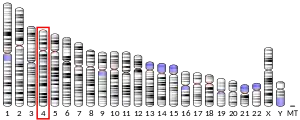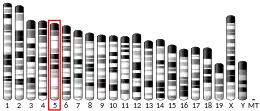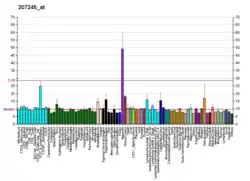| UGT2B17 | |||||||||||||||||||||||||||||||||||||||||||||||||||
|---|---|---|---|---|---|---|---|---|---|---|---|---|---|---|---|---|---|---|---|---|---|---|---|---|---|---|---|---|---|---|---|---|---|---|---|---|---|---|---|---|---|---|---|---|---|---|---|---|---|---|---|
| Identifiers | |||||||||||||||||||||||||||||||||||||||||||||||||||
| Aliases | UGT2B17, BMND12, UDPGT2B17, UDP glucuronosyltransferase family 2 member B17 | ||||||||||||||||||||||||||||||||||||||||||||||||||
| External IDs | OMIM: 601903 MGI: 1919023 HomoloGene: 68144 GeneCards: UGT2B17 | ||||||||||||||||||||||||||||||||||||||||||||||||||
| |||||||||||||||||||||||||||||||||||||||||||||||||||
| |||||||||||||||||||||||||||||||||||||||||||||||||||
| |||||||||||||||||||||||||||||||||||||||||||||||||||
| |||||||||||||||||||||||||||||||||||||||||||||||||||
| |||||||||||||||||||||||||||||||||||||||||||||||||||
| Wikidata | |||||||||||||||||||||||||||||||||||||||||||||||||||
| |||||||||||||||||||||||||||||||||||||||||||||||||||
UDP-glucuronosyltransferase 2B17 is an enzyme that in humans is encoded by the UGT2B17 gene.[5][6]
UGT2B17 belongs to the family of UDP-glucuronosyltransferases (UGTs; EC 2.4.1.17), enzymes that catalyze the transfer of glucuronic acid from uridine diphosphoglucuronic acid to a variety of substrates, including steroid hormones.[supplied by OMIM][6] It also metabolizes 3-hydroxycotinine, which is minor nicotine metabolite[7]
References
- 1 2 3 GRCh38: Ensembl release 89: ENSG00000197888 - Ensembl, May 2017
- 1 2 3 GRCm38: Ensembl release 89: ENSMUSG00000035836 - Ensembl, May 2017
- ↑ "Human PubMed Reference:". National Center for Biotechnology Information, U.S. National Library of Medicine.
- ↑ "Mouse PubMed Reference:". National Center for Biotechnology Information, U.S. National Library of Medicine.
- ↑ Beaulieu M, Levesque E, Hum DW, Belanger A (Nov 1996). "Isolation and characterization of a novel cDNA encoding a human UDP-glucuronosyltransferase active on C19 steroids". J Biol Chem. 271 (37): 22855–62. doi:10.1074/jbc.271.37.22855. PMID 8798464.
- 1 2 "Entrez Gene: UGT2B17 UDP glucuronosyltransferase 2 family, polypeptide B17".
- ↑ Chen G, Giambrone NE, Dluzen DF, Muscat JE, Berg A, Gallagher CJ, Lazarus P (October 2010). "Glucuronidation genotypes and nicotine metabolic phenotypes: importance of functional UGT2B10 and UGT2B17 polymorphisms". Cancer Research. 70 (19): 7543–52. doi:10.1158/0008-5472.CAN-09-4582. PMC 2998997. PMID 20876810.
Further reading
- Chung LW, Coffey DS (1978). "Androgen glucuronide. II. Differences in its formation by human normal and benign hyperplastic prostates". Investigative Urology. 15 (5): 385–8. PMID 76619.
- Moghissi E, Ablan F, Horton R (1984). "Origin of plasma androstanediol glucuronide in men". J. Clin. Endocrinol. Metab. 59 (3): 417–21. doi:10.1210/jcem-59-3-417. PMID 6746859.
- Beaulieu M, Lévesque E, Tchernof A, et al. (1997). "Chromosomal localization, structure, and regulation of the UGT2B17 gene, encoding a C19 steroid metabolizing enzyme". DNA Cell Biol. 16 (10): 1143–54. doi:10.1089/dna.1997.16.1143. PMID 9364925.
- Collier AC, Ganley NA, Tingle MD, et al. (2002). "UDP-glucuronosyltransferase activity, expression and cellular localization in human placenta at term". Biochem. Pharmacol. 63 (3): 409–19. doi:10.1016/S0006-2952(01)00890-5. PMID 11853692.
- Chouinard S, Pelletier G, Bélanger A, Barbier O (2005). "Cellular specific expression of the androgen-conjugating enzymes UGT2B15 and UGT2B17 in the human prostate epithelium". Endocr. Res. 30 (4): 717–25. doi:10.1081/ERC-200044014. PMID 15666817. S2CID 10971899.
- Lazarus P, Zheng Y, Aaron Runkle E, et al. (2006). "Genotype-phenotype correlation between the polymorphic UGT2B17 gene deletion and NNAL glucuronidation activities in human liver microsomes". Pharmacogenet. Genomics. 15 (11): 769–78. doi:10.1097/01.fpc.0000175596.52443.ef. PMID 16220109. S2CID 10171438.
- Jakobsson J, Ekström L, Inotsume N, et al. (2006). "Large differences in testosterone excretion in Korean and Swedish men are strongly associated with a UDP-glucuronosyl transferase 2B17 polymorphism". J. Clin. Endocrinol. Metab. 91 (2): 687–93. doi:10.1210/jc.2005-1643. PMID 16332934.
- Park J, Chen L, Ratnashinge L, et al. (2006). "Deletion polymorphism of UDP-glucuronosyltransferase 2B17 and risk of prostate cancer in African American and Caucasian men". Cancer Epidemiol. Biomarkers Prev. 15 (8): 1473–8. doi:10.1158/1055-9965.EPI-06-0141. PMID 16896035.
- Gallagher CJ, Muscat JE, Hicks AN, et al. (2007). "The UDP-glucuronosyltransferase 2B17 gene deletion polymorphism: sex-specific association with urinary 4-(methylnitrosamino)-1-(3-pyridyl)-1-butanol glucuronidation phenotype and risk for lung cancer". Cancer Epidemiol. Biomarkers Prev. 16 (4): 823–8. doi:10.1158/1055-9965.EPI-06-0823. PMID 17416778.
- Park JY, Tanner JP, Sellers TA, et al. (2007). "Association between polymorphisms in HSD3B1 and UGT2B17 and prostate cancer risk". Urology. 70 (2): 374–9. doi:10.1016/j.urology.2007.03.001. PMID 17826523.
- Chouinard S, Barbier O, Bélanger A (2008). "UDP-glucuronosyltransferase 2B15 (UGT2B15) and UGT2B17 enzymes are major determinants of the androgen response in prostate cancer LNCaP cells". J. Biol. Chem. 282 (46): 33466–74. doi:10.1074/jbc.M703370200. PMID 17848572.
This article is issued from Wikipedia. The text is licensed under Creative Commons - Attribution - Sharealike. Additional terms may apply for the media files.




